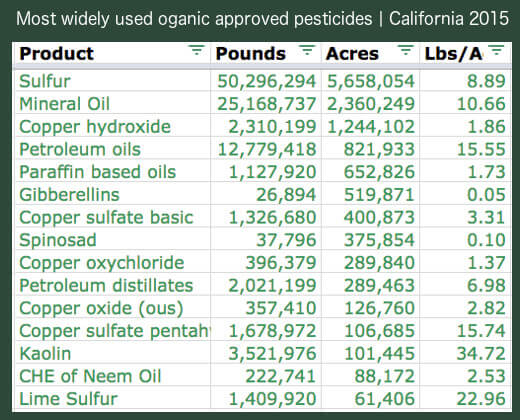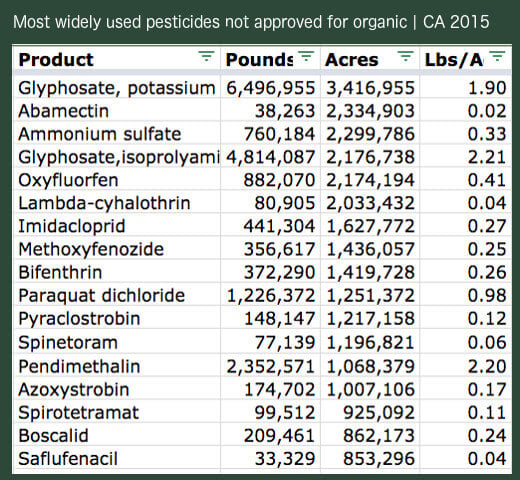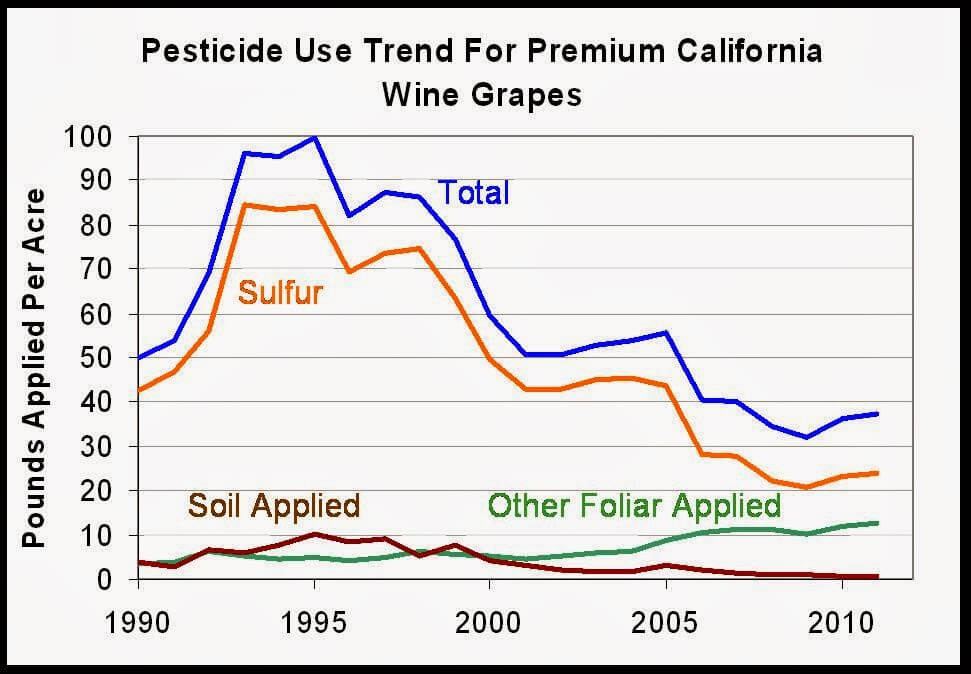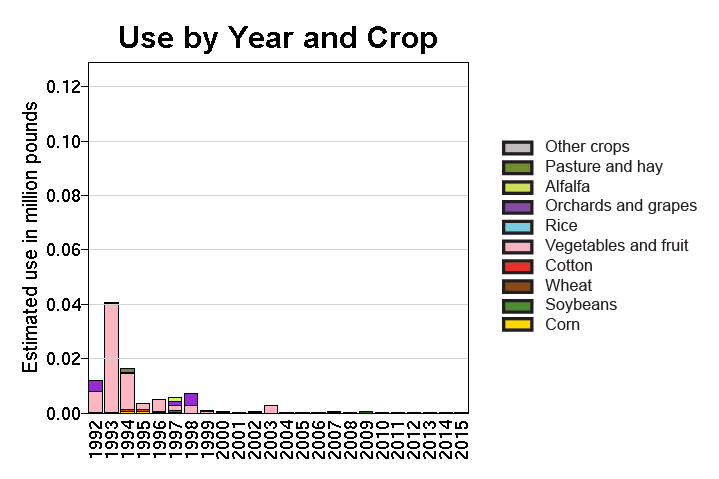This is part four of a four-part series attempting to separate fact from fiction regarding pesticide use on organic farms. In the first installment, we looked at the common claim that organic farms actually use more pesticides and more dangerous pesticides than convention farms through the lens of a few simple observations and talking to actual organic farmers. In part two, we looked at the factoids that have been taken out of context and twisted into a dishonest narrative. In part three, we looked at the special cases of pest control in organic orchards and vineyards. Here, we take a critical look at a widely circulated article purportedly busting myths about organic farming that managed to create a few myths.
For a lot of people, a lot of keyboard warriors, the entirety of their knowledge of pesticide use in organic production comes from a single Scientific American blog post titled “Mythbusting 101: Organic Farming > Conventional Agriculture” written by Christie Wilcox and published on July 18, 2011.The article sets about to dispel a number of widely held misconceptions about organic farming, but after clearing up the initial misunderstanding Wilcox makes a hash of the whole affair in playing up every “Dog Bites Man” bit of information she comes across for dramatic effect, along with heavy doses of unwarranted chemophobia (and here the dose does make the poison), leaving most readers more misinformed by the end than when they started. This is unfortunate, as we are all hard-wired to accept just-so stories or those that confirm our biases based on little evidence, but once accepted, those just-so stories are notoriously hard to dislodge, with the goalposts for standards of evidence moved down the field as needed in order to maintain a belief that was initially accepted based on flimsy evidence and reasoning.
The errors in the piece are legion, but I’m going to confine myself largely to the section on pesticides, although I can’t help but point out that the entire thing gets off on the wrong foot from the first sentence.
“Certified organic didn’t exist ten years ago. Yet in 2010, a mere eight years after USDA’s regulations officially went into effect, organic foods and beverages made $26.7 billion.”
Certified organic products have been sold in the U.S. since shortly after the formation of Organic Crop Improvement Association (OCIA) in 1985. What the USDA was tasked with was creating a national standard for certification. That began with the 1990 Organic Food Production Act and the National Organic Program Final Rule was first published in 2000. But the OCIA and other groups had been certifying organic farms prior to that. It’s a small thing, but it shows a writer out of their depth.
When informed by her boyfriend at the time that organic farms do in fact use pesticides, Wilcox didn’t want to believe it:
His family owns a farm in rural Ohio. He was grumbling about how everyone praised the local organic farms for being so environmentally-conscientious, even though they sprayed their crops with pesticides all the time while his family farm got no credit for being pesticide-free (they’re not organic because they use a non-organic herbicide once a year). I didn’t believe him at first, so I looked into it: turns out that there are over 20 chemicals commonly used in the growing and processing of organic crops that are approved by the US Organic Standards.
So far, so good. It also sounds like the boyfriend’s farm was a no-till operation with a serious commitment to conservation agriculture principles. Unfortunately, it goes off the rails in the next sentence:
Shockingly, the actual volume usage of pesticides on organic farms is not recorded by the government. Why the government isn’t keeping watch on organic pesticide and fungicide use is a damn good question, especially considering that many organic pesticides that are also used by conventional farmers are used more intensively than synthetic ones due to their lower levels of effectiveness.
ALL pesticides used by ALL farmers on ALL types of farms are subject to exactly the same EPA, state and county rules and regulations. All organic-approved pesticides are available to conventional farmers as well. One of the things that surprised me in researching this story was that I could not find a single organic-approved pesticide that wasn’t used in a significant way by conventional farmers somewhere. The vast bulk of organic-approved pesticides sold are used on conventional farms. That’s not surprising, but my expectation was that for all the talk of some of the mineral and horticultural oils being less effective and more expensive, there would be a list I could put together of products used exclusively on organic farms. I couldn’t. In talking to a range of experts, there wasn’t a commonly used organic pesticide that conventional farmers don’t also find useful under the right circumstances.

The actual volume usage of pesticides on organic farms is recorded by the government as part of their record-keeping on the pesticide use on all farms. It’s just not broken out separately for organic farms. As far as the USDA National Agricultural Statistics Service or CalPIP (the California Pesticide Information Portal) which keeps meticulous records, if you have an organic farm, it’s just a farm and how you market your product is not of interest to them. Your survey information on total pounds used, acres applied to, number of applications, application rates, etc. goes into the database with everyone else’s.
That might be annoying to people who would like to do head to head comparisons (and I include myself in that group) but it’s not a dastardly plot. It’s not a cover-up. Here’s the data on the most widely used pesticides approved for organic in California for the year 2015:

And here are the most widely used pesticides not approved for organic in California that year:

That spreadsheet is available here. (Special thanks to Steve Savage for assembling that data.)
We can see that sulfurs are the most widely used chemicals in California at 5.6 million acres, tied with glyphosate at 5.6 million acres. In 2015, organic acreage in California stood at 790,413. So, even if we were to assume that sulfur was used on every acre of organic production, that would leave 4.8 million conventional acres. Likewise, of the 2.1 million acres where various copper-based products were applied, assuming copper was applied to every acre of organic production – an even less plausible assumption – that leaves copper products applied to at least 1.4 million conventional acres, nearly double organic acreage. Pyraclostrobin, the top synthetic fungicide in California, was only applied to 1.2 million acres, so sulfurs and coppers are applied to more conventional acres than the top synthetic fungicide (at least according to the CalPIP database).
While it’s true that organic farmers use greater applications of these fungicides because the conventional farmers who use them are often complementing them with synthetics, it’s become clear to me that the difference in use has become exaggerated for polemic effect in the organic/conventional debate.
Wilcox blunders on:
According to the National Center for Food and Agricultural Policy, the top two organic fungicides, copper and sulfur, were used at a rate of 4 and 34 pounds per acre in 1971. In contrast, the synthetic fungicides only required a rate of 1.6 lbs per acre, less than half the amount of the organic alternatives.
For starters, there were vanishingly small numbers of organic farms in 1971 – coincidentally the year Chez Panisse was founded and created the first commercial demand for organic produce. As late as 1992, the year of the first survey tracking organic farms in California, there were only 45,493 acres. In 1971, I’d be surprised if there were more than 1000 acres of what we would recognize today as organic farms. That means the outdated application rates she cites for coppers and sulfurs were for the conventional farms of the time. As we can see from the spreadsheet, 3.31 is the upper bound on rates for coppers and the rate for sulfur is 8.89. Anyone who is taking data from 1971 and thinks it tells us anything about pesticide use in 2011 or 2018 doesn’t know what they are talking about.
Also note that the main organic insecticide, Spinosad, is widely used by conventional farmers as well. Dow sells the organic version under the Entrust label and the conventional version (different adjuvants) is sold under the name Success. Spinetoram, a synthetic derivative chemistry, is sold as Radiant.

But now with all of the concern over copper accumulation in soils and the restrictions on copper use from organic certifiers, a new option recently hit the market. It is a low load copper soap called Cueva [PDF]. Using Cueva instead of Basic Copper Sulfate or Cuprous Oxide cuts the actual amount of copper applied per acre by 90-98%. More importantly, it is so safe it has a very short re-entry of 4 hours compared to the 12-48 hour periods for other popular copper products.
Take the example of Rotenone. Rotenone was widely used in the US as an organic pesticide for decades. Because it is natural in origin, occurring in the roots and stems of a small number of subtropical plants, it was considered “safe” as well as “organic“. However, research has shown that rotenone is highly dangerous because it kills by attacking mitochondria, the energy powerhouses of all living cells. Research found that exposure to rotenone caused Parkinson’s Disease-like symptoms in rats, and had the potential to kill many species, including humans. Rotenone’s use as a pesticide
has already been discontinued in the US as of 2005 due to health concerns***, but shockingly, it’s still poured into our waters every year by fisheries management officials as a piscicide to remove unwanted fish species.
Rotenone is an excellent example of a natural substance that is very dangerous, especially if not handled properly — a point Wilcox clarifies in her next paragraph. But as she originally noted, it had been removed from agricultural uses in 2005, so it was no longer a good example of how organic-approved pesticides could be more dangerous than their conventional counterparts, with a 2006 report on botanical insecticides finding that recent amounts used in California had been about 400 pounds statewide. This seems to frustrate her, so she takes a gratuitous and probably unfair swipe at the people who manage lakes in wild lands. The strikethrough and asterisks are further evidence of how far out of her depth she is, without realizing it. See the second installment of this series for a further discussion of the rotenone story.
*** Oh, it turns out Rotenone got re-approved for organic use in 2010. See for yourself.
What Wilcox has stumbled upon here, and didn’t understand, is the Organic Materials Review Institute’s page for rotenone. What she is seeing is that rotenone is on the list of approved products by the National Organic Program. That essentially allows organically-grown imported bananas to be sold under the NOP label. Rotenone has not been re-approved for use by the EPA. And it’s an easy mistake to make. When I followed her link to see for myself, I was confused, because I would have heard that rotenone was back. So I asked some people who would know before shooting my mouth off. That’s not just journalism, it’s a pretty good rule of thumb in life.

Just last year, nearly half of the pesticides that are currently approved for use by organic farmers in Europe failed to pass the European Union’s safety evaluation that is required by law. Among the chemicals failing the test was rotenone, as it had yet to be banned in Europe.
This was actually a pretty big deal. Thirteen of twenty seven [PDF] organic approved substances up for review got the ax in 2009. Important to note, despite the increased application of precaution and higher standards, copper hydroxide, copper oxide, copper oxychloride, copper sulfate, and Bordeaux mixture (copper sulfate and calcium hydroxide) were all re-approved. Another important bit of context: earlier in 2009, the EU had banned 22 conventional pesticides. They were doing an across-the-board house cleaning, and due to the political climate surrounding both agriculture and chemicals in Europe, the event may well say more about the application of the precautionary principle in Europe than the relative safety of the pesticides pulled from the market. It’s worth noting that of the thirteen organic products that the EU banned, ten are banned in the US as well, with neem oil, lime sulfur, and mineral oil still approved for use in the US.
Furthermore, just over 1% of organic foodstuffs produced in 2007 and tested by the European Food Safety Authority were found to contain pesticide levels above the legal maximum levels – and these are of pesticides that are not organic. Similarly, when Consumer Reports purchased a thousand pounds of tomatoes, peaches, green bell peppers, and apples in five cities and tested them for more than 300 synthetic pesticides, they found traces of them in 25% of the organically-labeled foods, but between all of the organic and non-organic foods tested, only one sample of each exceeded the federal limits.
This is all true, but what does it really tell us? We aren’t given any comparison with conventional produce. We aren’t told if the levels suggest drift from conventional neighbors or cheating. In testing, organic produce routinely is found to have lower pesticide residues. But the tests are only for synthetic pesticides and not all of those either. They current still don’t have a test for glyphosate residues. But they don’t test for organic pesticide residues. The whole thing is such a mess, it’s hard to get worked up about since the vast majority of produce tested finds residues well below threshold levels, and those are set very conservatively.
Not only are organic pesticides not safe, they might actually be worse than the ones used by the conventional agriculture industry. Canadian scientists pitted ‘reduced-risk’ organic and synthetic pesticides against each other in controlling a problematic pest, the soybean aphid. They found that not only were the synthetic pesticides more effective means of control, the organic pesticides were more ecologically damaging, including causing higher mortality in other, non-target species like the aphid’s predators.
Let’s parse this.“Not only are organic pesticides not safe.”As a blanket statement, this is just false. Most organic pesticides are considered very safe. They are all regulated in the same way that conventional pesticides are. Some are more risky than others and were removed from use in 2009 by the EU. Same goes for conventional pesticides.
“They might actually be worse than the ones used by the conventional agriculture industry.” Again, as a blanket statement, this is false. Some organic pesticides are more risky than their synthetic counterparts. That’s true. But those products are also used by conventional farmers.
The Canadian study she cited as evidence that organic pesticides are “worse” was a theoretical exercise – not based on any data about how organic farmers actually control aphids in soybeans. Rob Wallbridge, former organic farm inspector and vegetable, berry, and grain producer, current organic agronomist, and consultant in Ontario, Canada, pointed out to me that the study did not test actual organic pest control strategies as practices by farmers in the real world. As best as I’ve been able to gather, that’s true.
So, the evidence that organic pesticide use is more dangerous:
• Application rates of sulfur from 1971, mostly from conventional farms.
• An insecticide that was phased out starting around a decade earlier (from 2011) and then banned by the EPA in 2005.
• That the EU removed a number of products in 2009, ostensibly to make organic farming safer, as they also did that year for 22 synthetic products.
• And a laboratory study that shows that two organic pest strategies that nobody uses could possibly be worse for the environment three conventional products.
And notice how the at each step of the way the particular becomes universal. “Rotenone was banned in 2005, but is a good example of how dangerous natural compounds can be” and “Some risky organic pesticides were taken off the market” turns into “Not only are organic pesticides not safe” ignoring that the not safe ones were just removed but applying that property to the remaining organic pesticides that are considered relatively safe. Which in turn gets “They might actually be worse than the ones used by the conventional agriculture industry.” layered on top of it. But that’s spreading a little too much mustard on the sandwich. An organic pesticide can have a somewhat worse risk profile than a synthetic counterpart and also be relatively safe. It also might be applied to more conventional acres than organic. Which is the point of the first chart. There’s no need to fear monger to get the point across that some organic pesticides have higher risk profiles than their synthetic counterparts. The vast majority of pesticides used today are Category IV “essentially non-toxic”.
CORRECTION: The initial draft as published took issue with Ms. Wilcox’s opening sentence,“Certified Organic didn’t exist ten years ago. Yet in 2010, a mere eight years after USDA’s regulations officially went into effect, organic foods and beverages made $26.7 billion.” I pointed out that organic farms had been certified by various agencies since 1985, and it was only the USDA’s National Organic Program that went into effect eight years prior.
A reader pointed out that in the capitalization of C and O shows that she was referring to the NOP label in particular and not to organic certification in general. I regret the error – MB
POSTSCRIPT May 26, 2018:
It has been brought to my attention that at the time Scientific American published a response to Christine Wilcox’s “Mythbusting 101: Organic Farming > Conventional Agriculture“ by an urban organic farmer named Jason Mark titled “Myths: Busted–Clearing Up the Misunderstandings about Organic Farming” and then a response to Mr. Mark by Ms. Wilcox, “In the immortal words of Tom Petty: “I won’t back down” where she manages to pile on more errors.
She tried to compare the top organic insecticide to the top conventional insecticide and the top organic fungicide to the top conventional fungicide but ended up doing two insecticide vs. fungicide comparisons.
She used the LD50 of the compound copper sulfate which is only used as an aglaecide (sused to kill algae) rather than the LD50 of an copper based fungicide formulations approved for use in agriculture (they are all much lower). The LD50 of Basic Copper 53 [PDF], a very popular product, is 1502 mg/kg, much less toxic than straight copper sulfate at 30 mg/kg. (Remember, the higher the number, the lower the toxicity.)
The correct comparisons show organic fungicide to be more toxic than the conventional fungicide, and the organic insecticide less toxic than the conventional insecticide. (OA = organic approved)
Basic Copper 53 (OA): 1503 mg/kg
Chlorothalonil: 10,000 mg/kg
Pyrethrins (OA): 200 mg/kg to greater than 2,600 mg/kg (Pyganic, perhaps the most popular pyrethrins is 2000 mg/kg
Chlorpyrifos: 95 to 270 mg/kg
Here are some match ups from our spreadsheet above of the most widely used chemicals.
Insecticides
Abamectin: 11 mg/kg
Lambda cyhalothrin is a synthetic pyrethroid: 144 mg/kg
Imidacloprid: 450/mg/kg
Stylet Oil (OA mineral oil): 10,000+ mg/kg
Spinosad (OA): 5000+ mg/kg
Bacillus thuringiensis (OA): 10,000 mg/kg
Fungicides
Copper hydroxide (OA): 1000 mg/kg
Pyraclostrobin: 5000 mg/kg
While both copper hydroxide and pyraclostrobin are considered moderately toxic pyraclostrobin is significantly less toxic . However, looking at insecticide match ups, spinosad, like pyraclostrobin is at the lower bound of moderately toxic, on the tipping point of slighly toxic where we find stylet oil and Bt, while the top three insecticides are highly toxic. In fact, abamectin is considered extremely toxic.
Nor does she address that conventional farmers use those organic pesticides.
Here are some Environmental Impact Quotient (EIQ) comparisons (the lower the number, the lower the impact) for rotenone and a few other relevant insecticides.
Organic approved
Bt – 8
Spinosad – 17
Pyganic – 18 (pyrethrin based)
Rotenone – 33
Synthetics
Abamectin – 38
Imidachlorprid – 37
Chlorpyrifos – 43
Disulfoton – 104
It remains the case that for a lot of non-ag readers the initial blog post was essentially the source of bulk of what they thought they knew about organic pesticide use and people continue to share the link to this day as evidence that organic pesticide use is more concerning than conventional use.
Marc Brazeau is the GLP’s senior contributing writer focusing on agricultural biotechnology. He also is the editor of Food and Farm Discussion Lab. Follow him on Twitter @eatcookwrite































